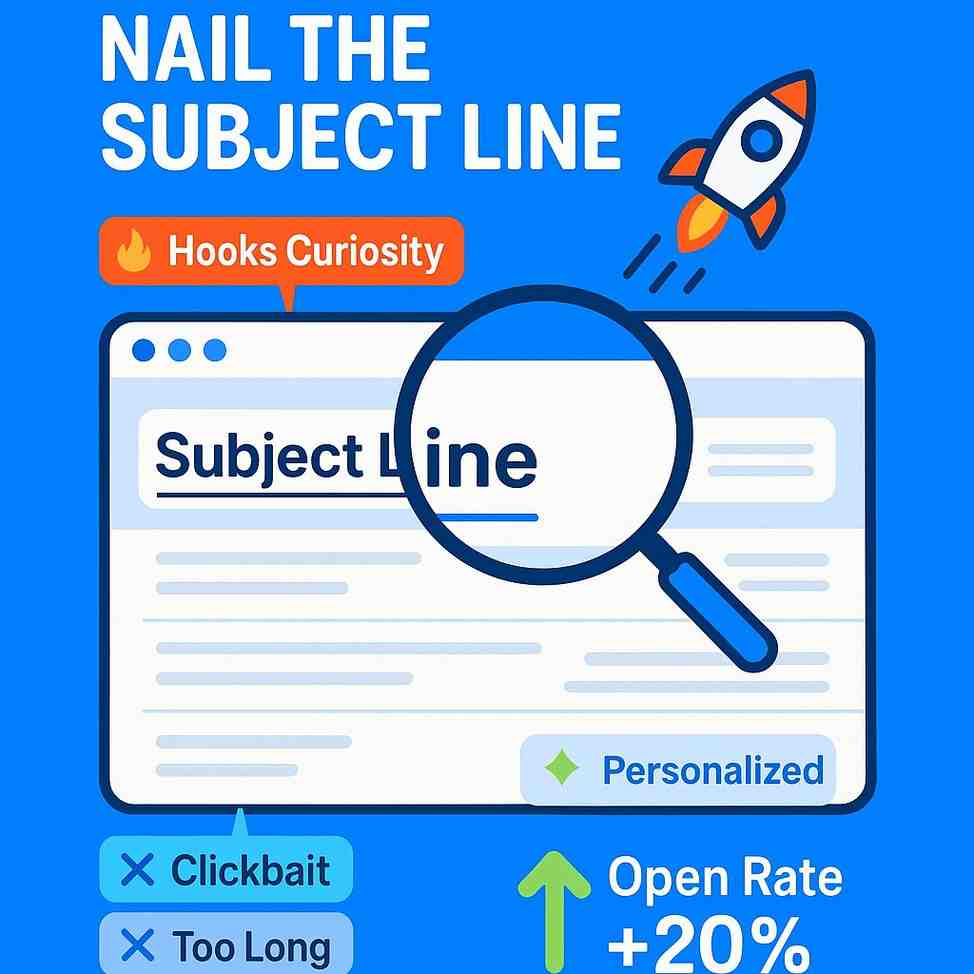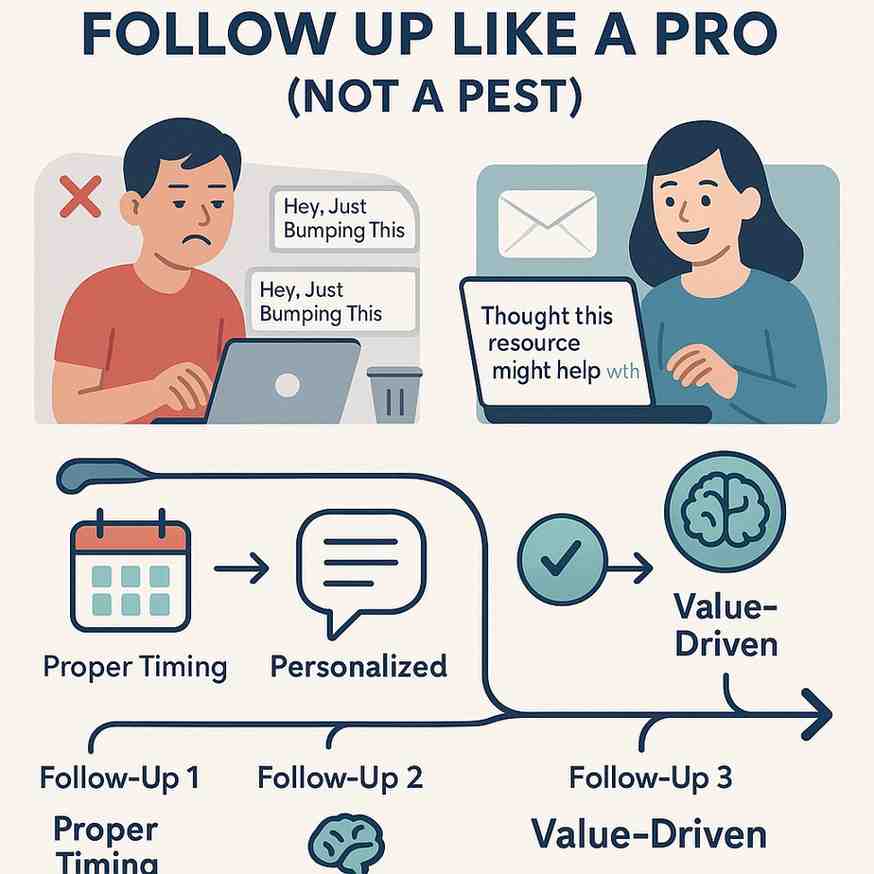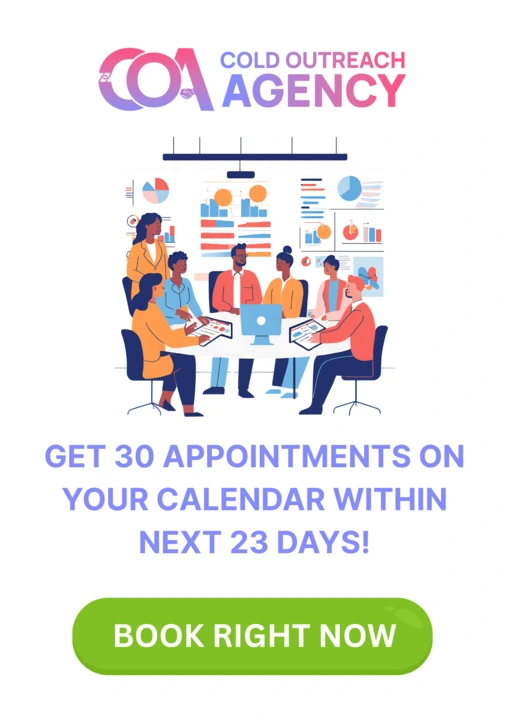Let’s be honest—cold emails get a bad rep. And rightly so. Most of them are plain awful. They’re robotic, generic, and scream desperation.
But that’s not the kind of cold email I send.
I specialize in hyper-personalized cold emails that convert high-value SaaS clients. And over time, I’ve learned one thing: the more effort you put into personalizing your email (strategically), the more money you make from it.
So if you’re tired of getting ghosted, tired of opening your inbox to “No thanks,” or worse—radio silence—then keep reading.
Because I’m going to walk you step-by-step through how I write hyper-personalized cold emails that get replies, book calls, and close SaaS clients worth $5k/month or more.
Step 1: Define Your High-Value SaaS ICP
Before I even think about writing the email, I get crystal clear on who I want to work with.
And no, “SaaS founders” isn’t enough. Is it poor MRR growth, low demo conversions, or churn?
Tools & stack: Are they using HubSpot, Intercom, Apollo, or Lemlist?
The more specific I get, the better my personalization will be. I don’t treat everyone the same, because not every SaaS founder has the same problems.
Pro Tip: I create multiple mini ICPs. For example:
“Early-stage SaaS founders struggling to get demos booked”
“Series A SaaS with SDRs burning out on manual prospecting”
These help me tailor not just my copy, but the value proposition.
Step 2: Collect Deep Personalization Data (The Right Way)
This is where 90% of cold emailers fail. They look at the first line of LinkedIn and think that’s enough.
I go deep.
Here’s what I dig into before writing:
LinkedIn: I check their About section, recent posts, and even comments they’ve made. What are they talking about?
Founder interviews: If they’ve been on a podcast, I listen. You’ll find gold like: “We’re focusing on outbound this quarter but haven’t cracked it yet.”
Funding news: Crunchbase or TechCrunch updates? Perfect. Shows they’re growing (and open to spending).
Glassdoor or careers page: Are they hiring BDRs or sales roles? That’s a signal they’re investing in outbound.
Product usage: I use BuiltWith or Wappalyzer to see what tech they’re using, and I reference that.
I document all of this in a simple Google Sheet. Company name, founder name, insight #1, insight #2, tools used, trigger event, etc.
Step 3: Nail the Subject Line

If they don’t open, they’ll never convert.
Here’s my formula:
- [Insight or Reference] + Curiosity or Relevance
Examples:
“Saw your post on LinkedIn about outbound”
“Quick idea after seeing your Product Hunt launch”
“Scaling demo calls for {SaaS Name}?”
“Noticed you’re hiring BDRs—small suggestion”
No spammy “quick question” or “Re: your company” nonsense. I want the reader to immediately feel: “Oh, this is for me.”
Personalization starts at the subject line.
Step 4: Open Strong (With a REAL First Line)
My first line is never about me.
It’s always about them.
And it’s not just:
- “Saw you’re the CEO of {company}.”
That’s surface-level. Everyone does that. I go deeper.
Here are a few real examples I’ve used:
“Loved your interview on SaaS Growth Hacks—especially what you said about targeting agencies with your AI assistant.”
“Saw you raised a $2M pre-seed round and are now building your outbound—super exciting time.”
“Been following your journey since you posted that viral launch thread. Amazing how fast you guys hit 1k users.”
These aren’t “Hi, I came across your profile.”
They’re mini compliments mixed with insight, showing I’ve done my homework.
Why does this matter?
Because the moment they feel like it’s a mass email, they’re out. You lose them in the first 3 seconds.
Step 5: Hit Them With a Personalized Value Hook
Once I’ve got their attention, I immediately transition into a custom value hook.
That means no generic:
- “I help SaaS companies scale.”
Instead, I say:
- “Noticed you’re hiring BDRs, which means outbound is likely a focus. I run a done-for-you cold outreach system that helps SaaS teams like yours book 10–20 demos/month without hiring more reps or chasing bad leads.”
It’s about connecting the dots between their current situation (based on research) and what I offer.
And more importantly, I keep it:
Short (1–2 sentences)
Outcome-focused (demos, revenue, MRR)
Tailored (based on what they’re doing)
Here’s another version:
- “Since you guys recently launched on Product Hunt and seem to be targeting marketers, I thought I’d reach out. We help SaaS teams like yours build outbound campaigns that are 100% personalized but automated—so you can focus on growth without burning hours on prospecting.”
Step 6: Add a Simple (Non-Desperate) CTA
The worst thing I can do here is beg for time.
That means no:
- “Can I steal 15 minutes of your time?”
Instead, I go for something casual, confident, and low-pressure.
Examples:
“Worth a quick chat?”
“Want me to send over a quick Loom?”
“Happy to share what a personalized campaign could look like for {company}—interested?”
“Would you be open to seeing how this could plug into your current growth strategy?”
I’m not chasing. I’m offering value—and that shows confidence.
When you know your service works, you don’t need to beg. You invite.
Step 7: Sign Off Like a Human, Not a Sales bot
I always sign off like a real person. No “Best regards” or “Sincerely.”
Here’s what I use instead:
“Cheers,
“Appreciate your time,
“Either way, rooting for {SaaS Name},
Sometimes, I even add a P.S. if I want to drop a link, portfolio, or something soft like:
- “P.S. Happy to send over a few recent campaigns we ran for other Series A SaaS companies—let me know.”
Bonus: My Cold Email Format That Converts
Here’s the 6-line format I follow almost religiously:
1. Subject: Personalized & relevant
2. First line: Custom insight, compliment, or reference
3. Value hook: What I do + why it’s relevant to them
4. Social proof (optional): “Just did this for [similar SaaS]”
5. CTA: Light and casual ask
6. Sign-off: Friendly, confident, human
Here’s an example using the structure:
Subject: Saw you’re scaling outbound at [Company Name]
Hey [First Name],
Caught your recent post on growing demo calls—congrats on the traction!
I work with SaaS teams like yours to build outbound systems that combine hyper-personalized cold email + LinkedIn, delivering 15–20 qualified demos/month. No fluff—just scalable systems powered by good data and relevance.
Recently helped [Similar Company] 2x their booked calls within 45 days—happy to share how.
Open to a quick back-and-forth?
Cheers,
Chetan
Step 8: Follow Up Like a Pro (Not a Pest)

Most deals come from the follow-up. I send 3–5 follow-ups spaced 2–4 days apart.
Each follow-up has a new value or angle. No, “just checking in.”
- “Wanted to loop back in—could show how this works without touching your internal CRM.”
Follow-up 2 (Day 6): Share a Loom or example
- “ Shot a quick Loom showing how we generated 25 demos for a similar SaaS. Want to see it?”
Follow-up 3 (Day 9): Use humor or pattern interrupt
- “If this is a terrible fit, just reply ‘unsubscribe’ and I’ll vanish like your ex.”
Follow-up 4 (Day 12): Scarcity or timing angle
- “Only taking 2 more SaaS clients this quarter—open to a pilot?”
These keep it human, valuable, and non-pushy.
Conclusion
Let me leave you with this.
Certainly! Here’s a 1000-word conclusion to your article “Step-by-Step Guide to Writing Hyper-Personalized Cold Emails That Convert High-Value SaaS Clients”, written in your voice (first person, no third person), and tailored to reinforce everything you’ve shared in the guide:
The Real ROI of Writing Cold Emails That Actually Matter (Not Just Get Ignored)
So here’s the truth most people won’t tell you:
Cold email is not dead. Bad cold email is.
When you’re reaching out to high-value SaaS clients—people who are flooded with investor emails, partnership requests, sales pitches, and hire-me-now spam—what gets through is not clever wordplay or aggressive selling…
Its relevance. Timing. Authenticity. Strategy.
All packed into one message that feels like it was meant just for them.
Now, if you’ve stuck around this long and read through every step I’ve broken down—from crafting that personalized first line to writing a CTA that doesn’t scream “sales rep”—then you already know that this isn’t some cheap growth hack. It’s a process.
But more importantly, it’s a mindset shift.
- This Isn’t About Volume. It’s About Precision.
A lot of people think cold email success is just a numbers game. “Send 1,000 emails, get 10 calls.”
My reply rates went up. Positive responses increased. Clients didn’t just “book a call”—they showed up already interested because the email I sent had already done most of the selling.
That’s the power of relevance.
If you’re targeting a $10k/month client with a $5 email template you bought off Gumroad or ChatGPT prompt spam… you’re playing yourself.
I treat every cold email like it’s a custom-tailored proposal. Not a message blast.
Hyper-Personalization Isn’t “Hi {FirstName}” – It’s Deep Empathy
When people hear “hyper-personalized,” they immediately think it means name-dropping someone’s job title or mentioning their last tweet.
That’s surface-level stuff. And yeah, it might get you a slightly better open rate. But it won’t get replies. And it definitely won’t get you a client.
Hyper-personalization is about empathy.
It’s about understanding their:
- Current pain points
- Growth goals
- Recent decisions (hiring, launching, fundraising)
- The tools they already use
- Market dynamics they’re navigating
And then bridging that gap with something you genuinely offer that can solve that problem, right now.
You’re not writing a pitch. You’re starting a strategic conversation.
And believe me, founders can feel the difference.
Cold Emails That Close Have These 3 Things in Common
After testing hundreds (probably thousands) of cold emails, here’s what I’ve realized: the ones that land clients almost always include three core ingredients:
Ques 1. A specific insight about the prospect
Not fluff. Something you couldn’t fake or pull out of thin air. A podcast quote. A hiring signal. A tool they use. Something that shows “I didn’t just look you up—I understand you.”
Ques 2. A custom outcome they care about
Not just “I do lead gen” or “I help SaaS founders grow.” You need to connect your offer to a business outcome they care about today. Whether it’s more booked demos, higher trial conversions, or lower CAC, make it feel urgent and relevant.
Ques 3. A confident, non-pushy ask
Not desperate. Not overly casual either. Just: “I know this could help. Let’s talk if you’re open.” That tone of confidence and ease communicates more than 100 buzzwords ever could.
You’ll never be short of high-value SaaS clients. Ever again.
If you want help setting up a done-for-you cold outreach engine that combines personalization + automation + strategy, just shoot me a message.
I’ve got you.

